Solved Computer Organization and Architecture Assignment Questions
VerifiedAdded on 2023/06/04
|5
|523
|78
Homework Assignment
AI Summary
This document presents a solved assignment related to Computer Organization and Architecture. It includes solutions to questions covering topics such as determining the number of bits required for opcode and address parts based on the number of instructions and word size, demonstrating different addressing modes (immediate, direct, indirect, and indexed) with examples, creating a MARIE program to realize the expression S = (A+B)(C+D), and converting a program into machine code with corresponding symbol table and accumulator value after program termination. Desklib offers a wealth of similar solved assignments and past papers for students.
1 out of 5
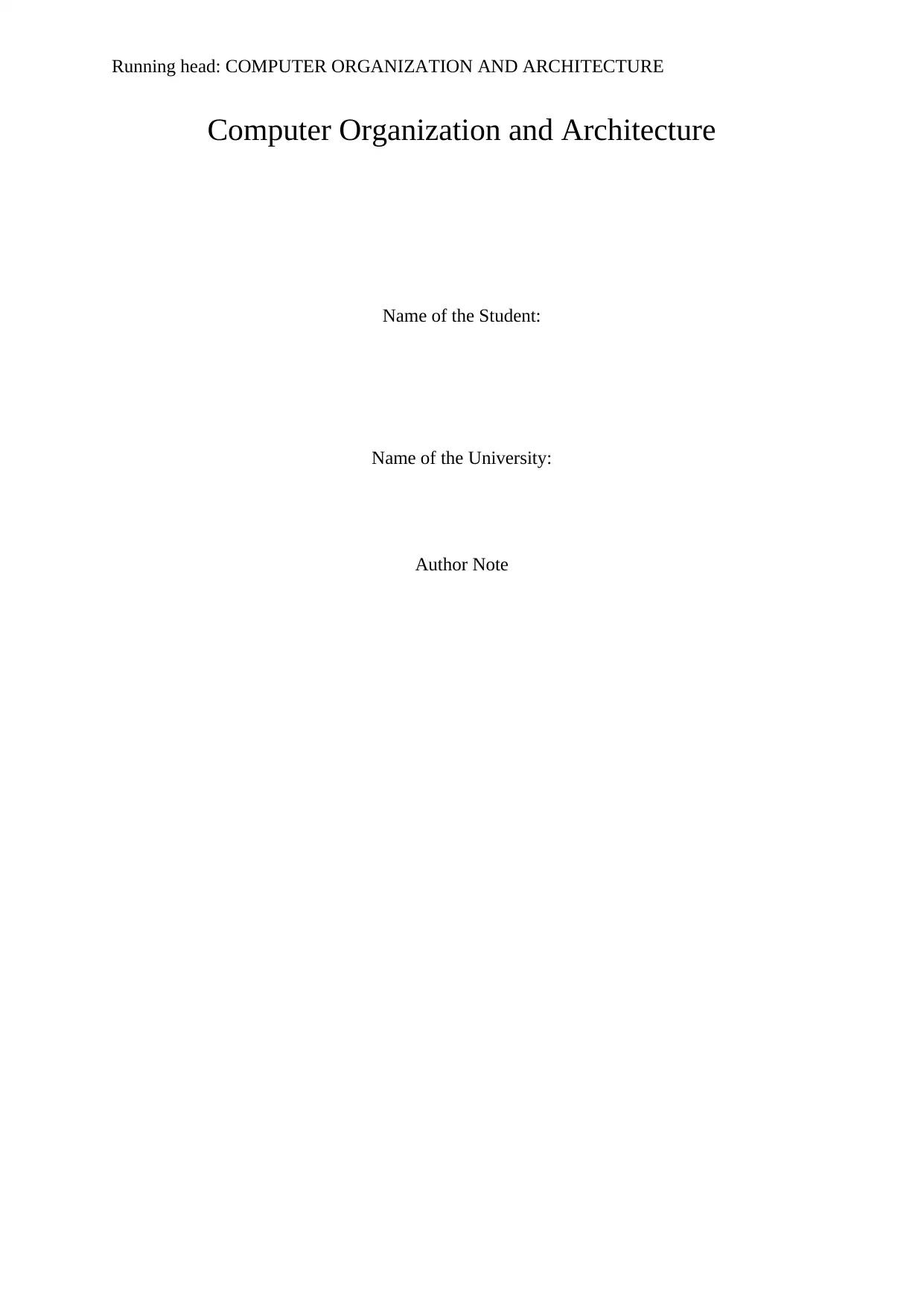
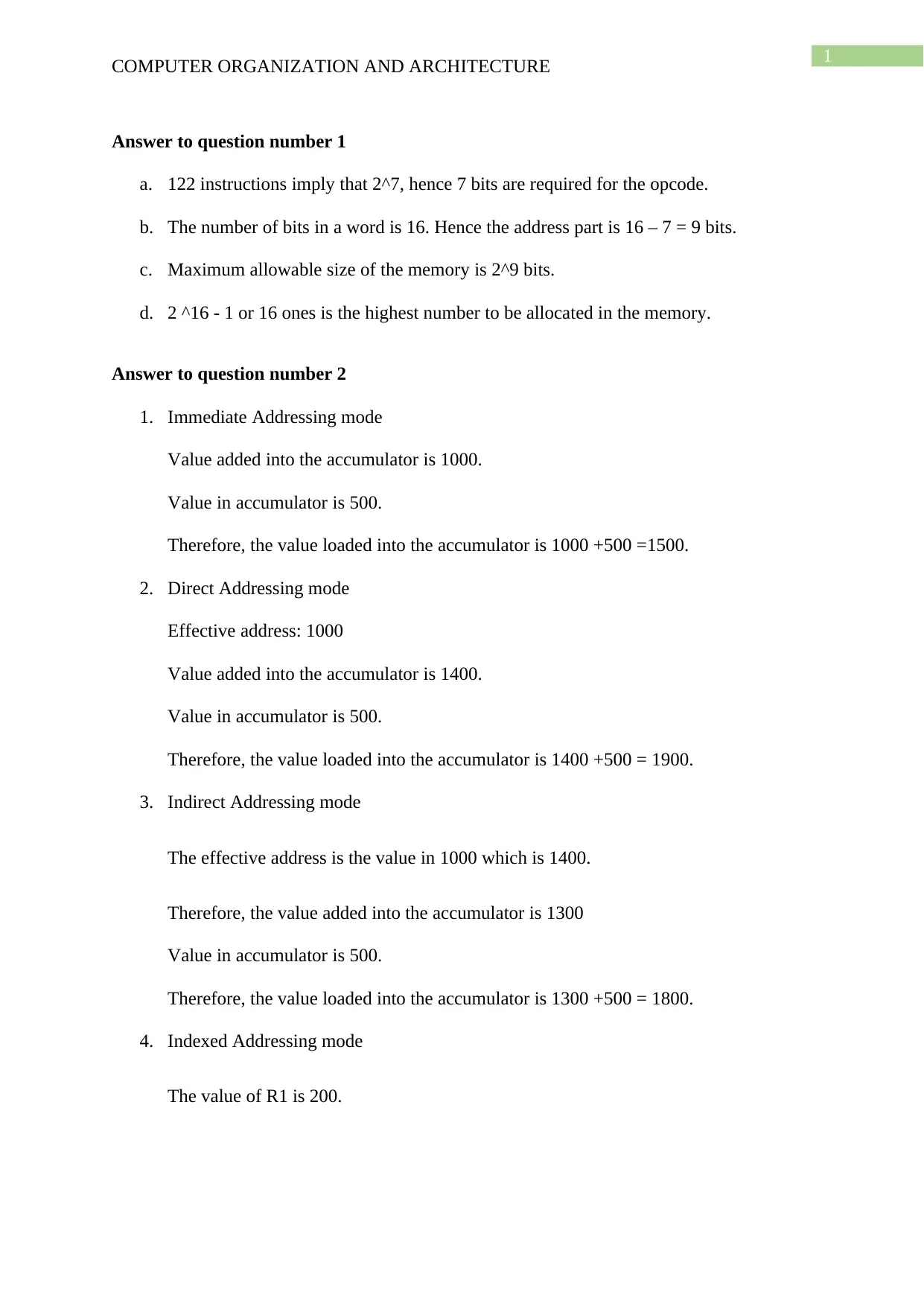
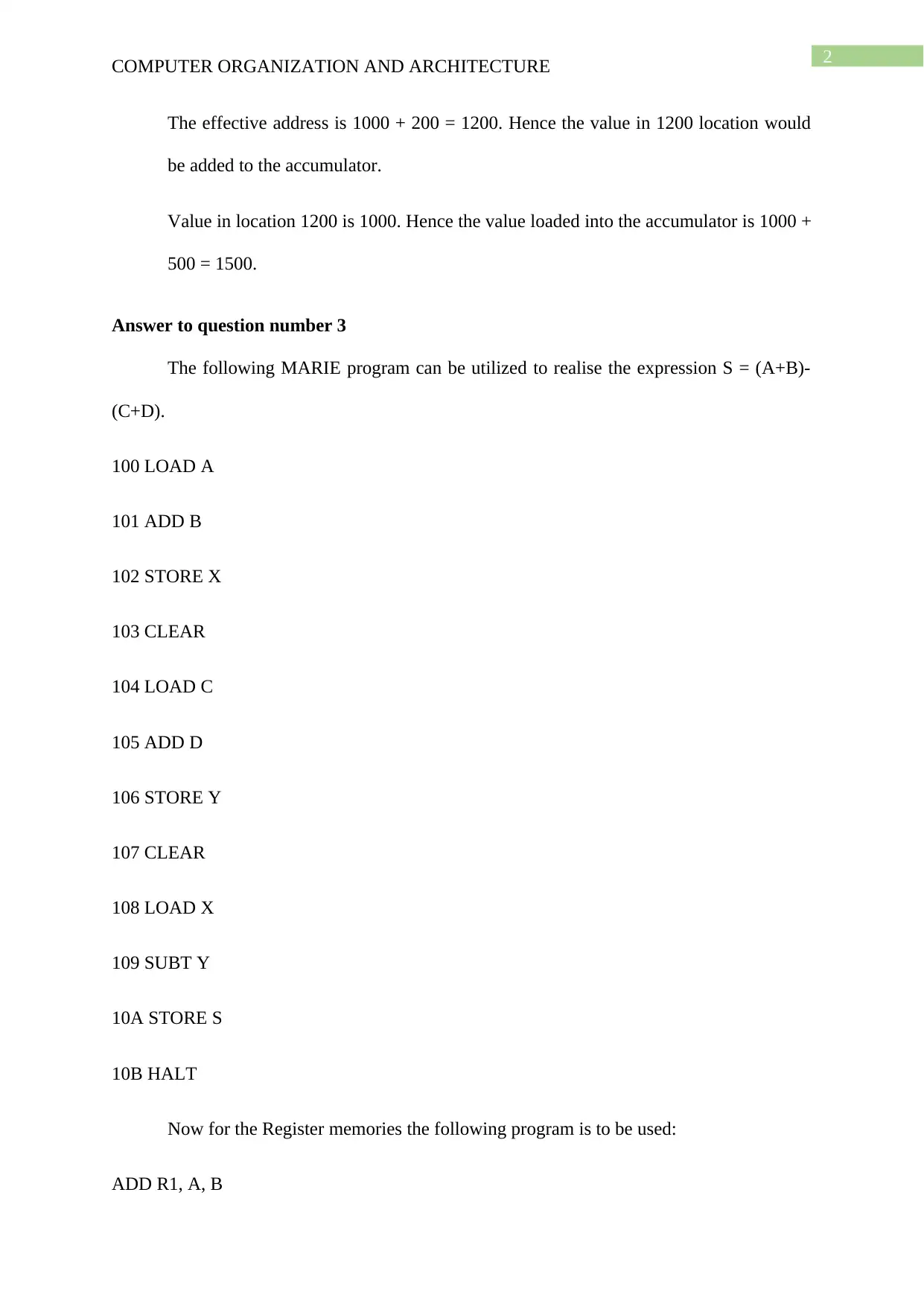

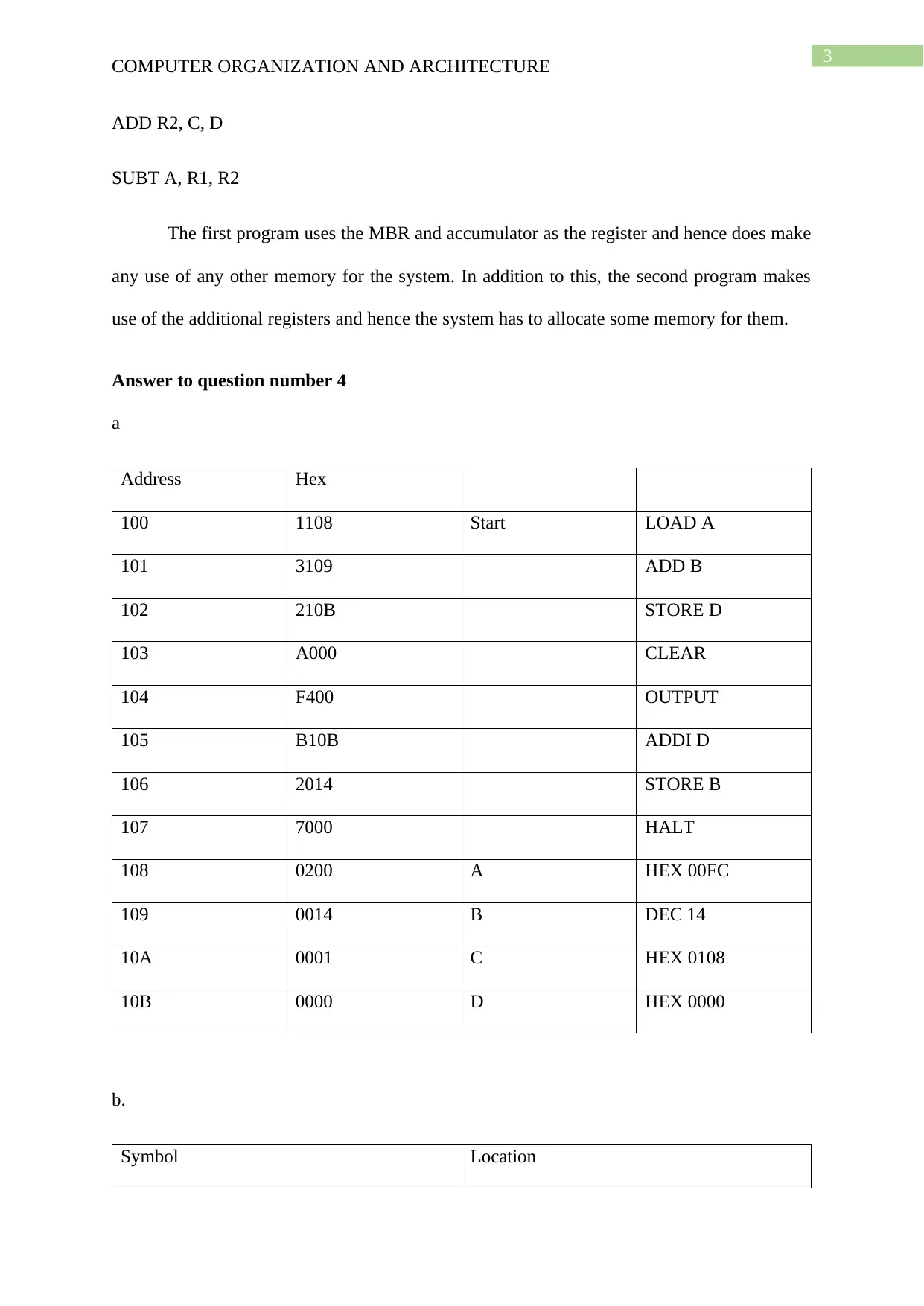
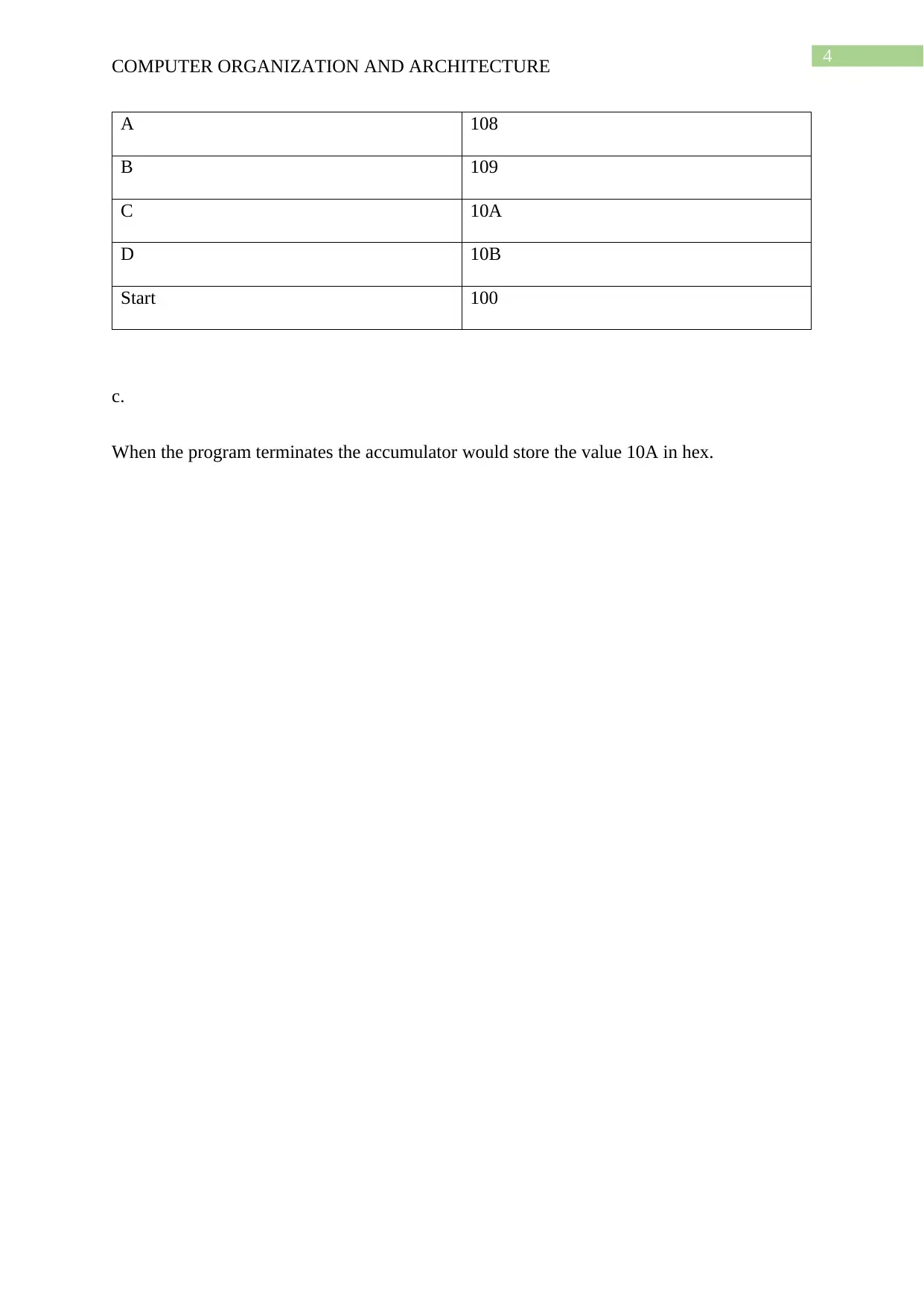



![[object Object]](/_next/static/media/star-bottom.7253800d.svg)